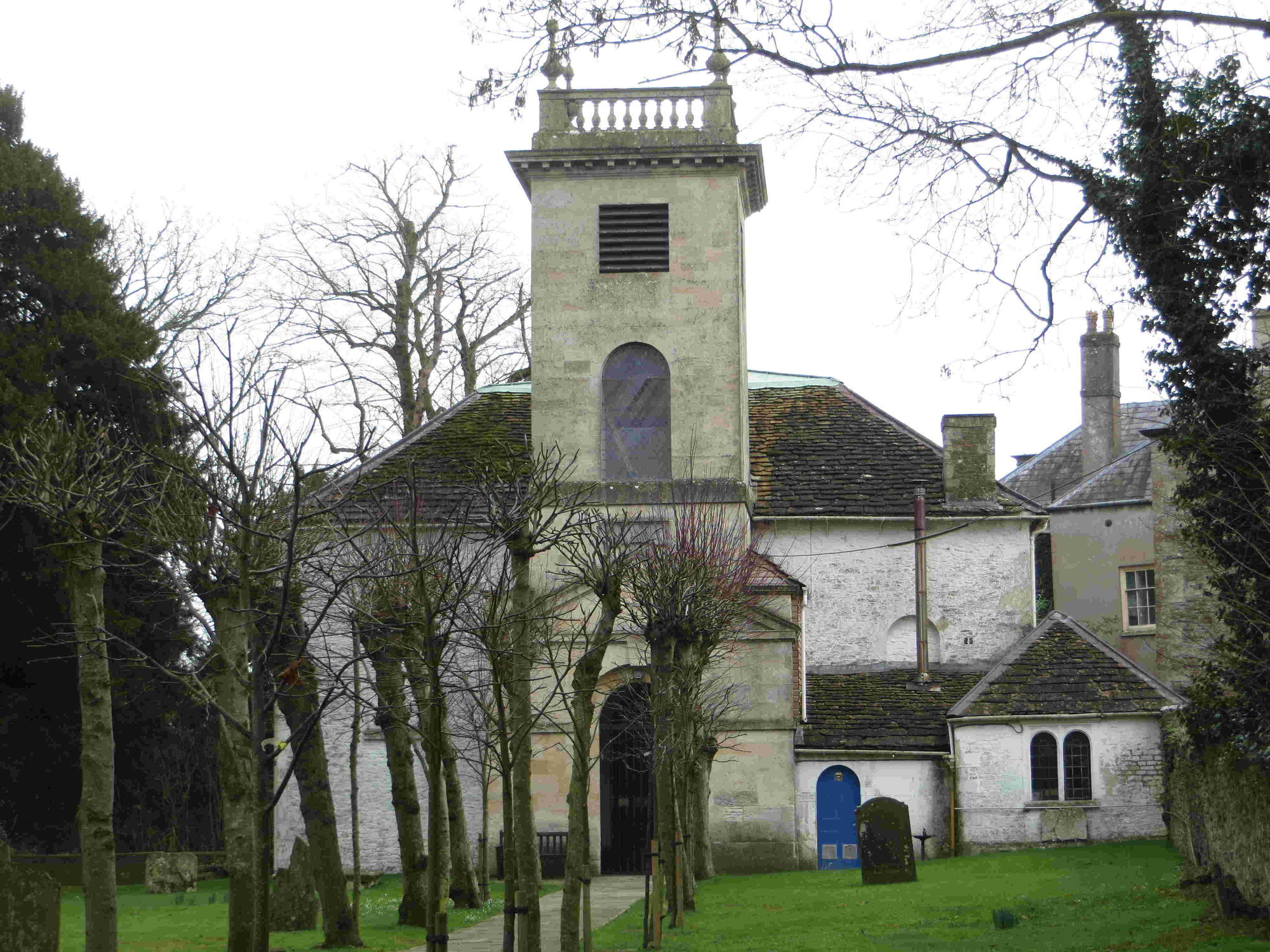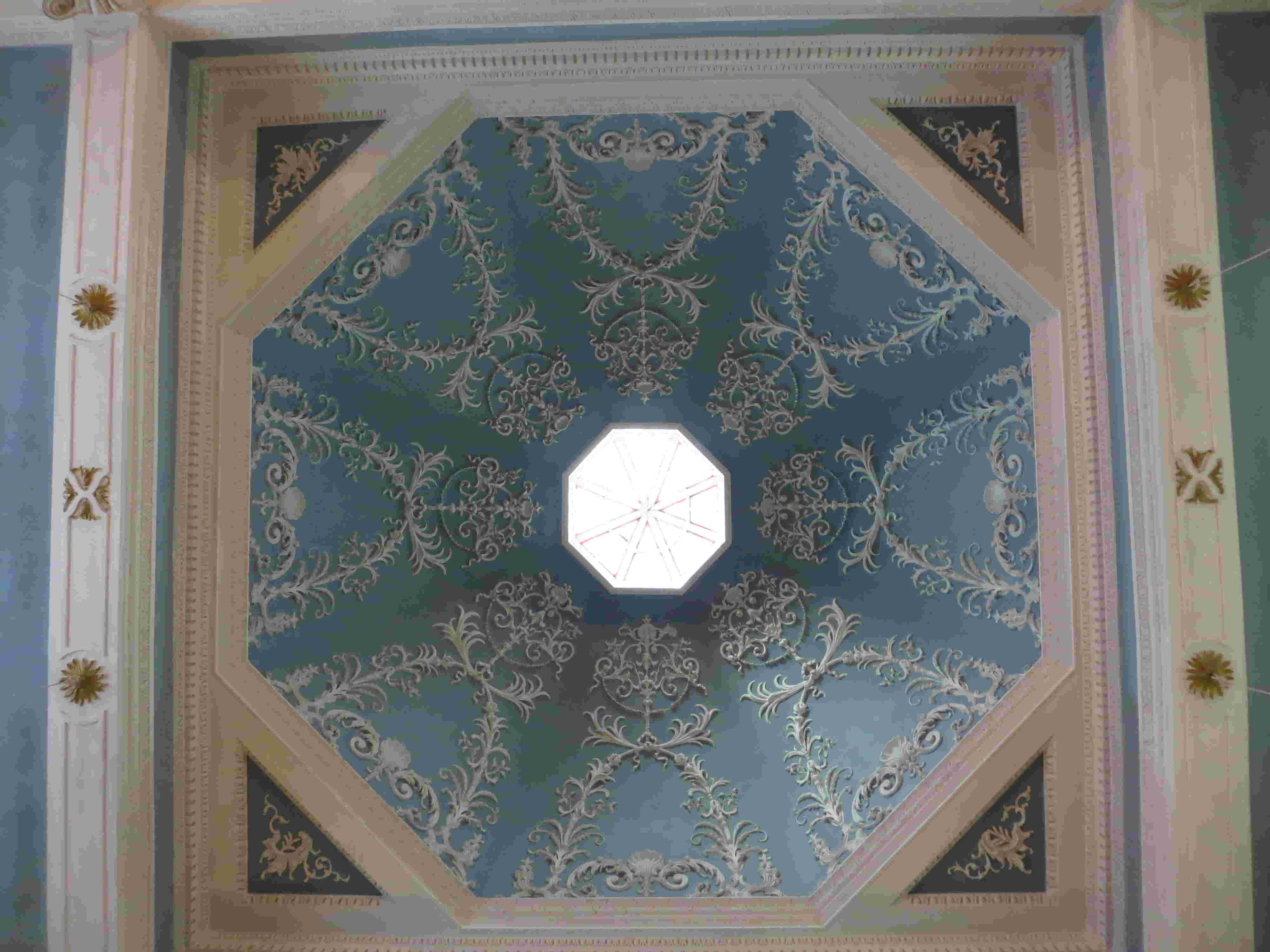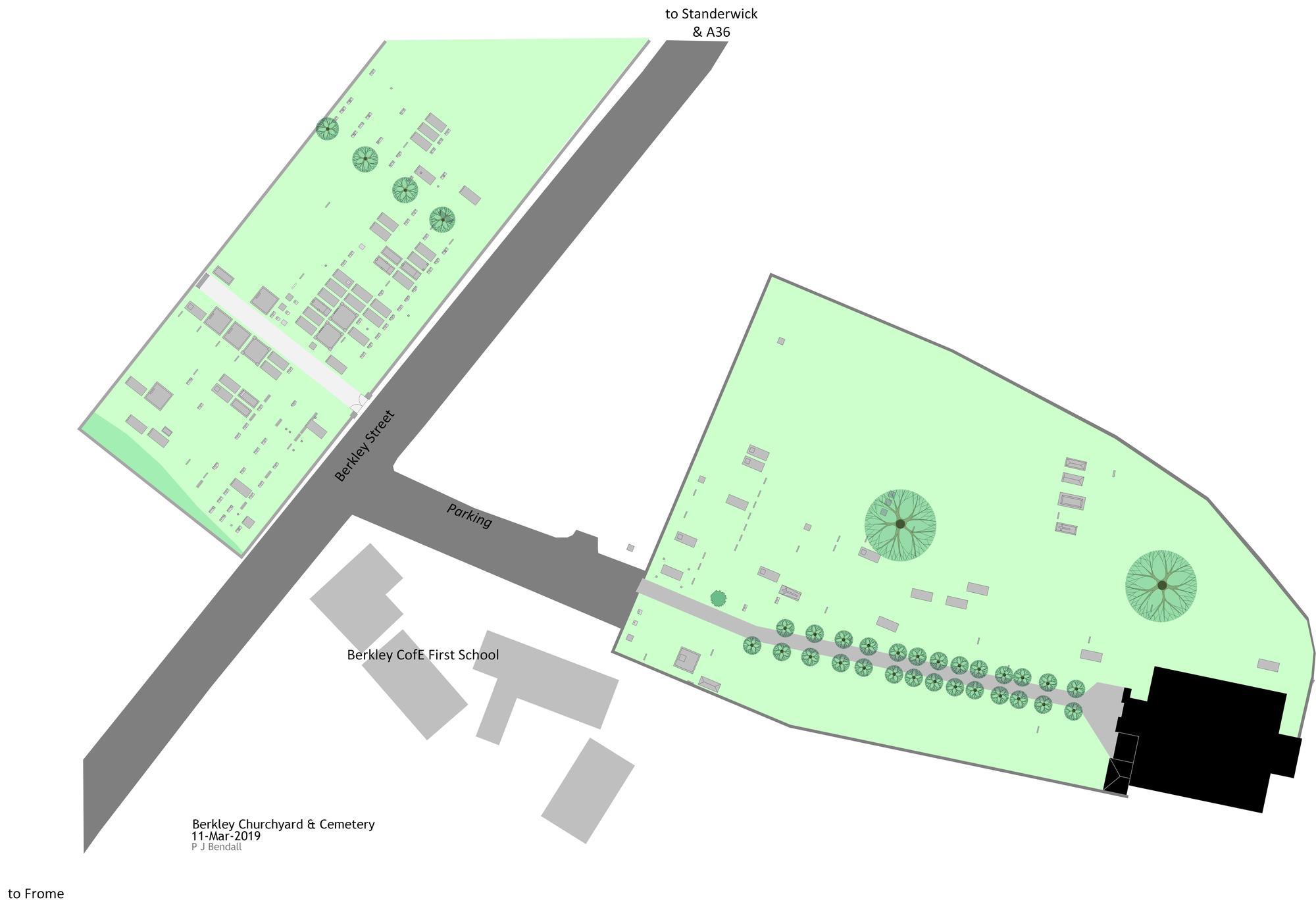
St Mary's, Berkley
A memorial to the Newborough family in the church states that the tablet was erected when the church was rebuilt in 1751.
From the Bath Weekly Chronicle and Herald of Sat 15 Apr 1939 p26: "Berkley Church, near Frome There is an interesting 18th century church at Berkley, near Frome, which is said to have been built in 1751 and to have been a copy of St. Stephen’s, Wallbrook, London. It has every appearance of being the work of John Wood, but I have been unable to find any reference to the name of the architect. . . ."
The church has a fine octagonal dome with inside the blue surface with white mouldings similar in style to Wedgwood jasperware, although the latter is usually stated as having been developed in the 1770s.

Against entry 440 in the burial register 1813-1942 for a burial on 28 Nov 1859 is ‘the first corpse in the new burial ground (which was consecrated on the 11th inst.)’ Presumably this is an extension of the churchyard. Against entry 647 in the same burial register for a burial on 12 Jul 1903 is ‘first interment in the New Burial Ground’, a reference to the cemetery on the other side of the road (Berkley Street).

Documentation
At Somerset Heritage Centre:
- D/P/ber 2/1/1 Baptisms, marriages, burials 1546-1770
- D/P/ber 2/1/3 Burials 1678-1723
- D/P/ber 2/1/7 Baptisms, burials 1770-1812
- D/P/ber 2/1/9 Burials 1813-1942
The burial register 1546-1770 contains, after the burials, two pages listing benefactors for the poor and for the church. The lists were initially made in 1631 and then added to. This is followed by two memoranda (in Latin) made in 1562 and 1631.
The burial register 1546-1770 has a gap for the period 1670-1725 during which a separate volume was used. The first page of this additional volume has ‘Register of those who were Buried in woollen from 1678 to 1723’. The first pages have the entries (in Latin) for 1680 but then gives the burials (in English) from 1678. The rector at time of the start of the volume was Anthony Prowse who has a memorial in the churchyard on the wall of the church. The Burial in Wool Acts of 1666-80 required the dead, except plague victims and the destitute, to be buried in pure English woollen shrouds and not “made of or mingled with Flax Hempe, Silke, Haire, Gold or Silver or other then what shall be made of Wooll onely” and failure to supply an affidavit to that effect could incur a hefty penalty of £5 which would be used for the poor of the relevant parish.